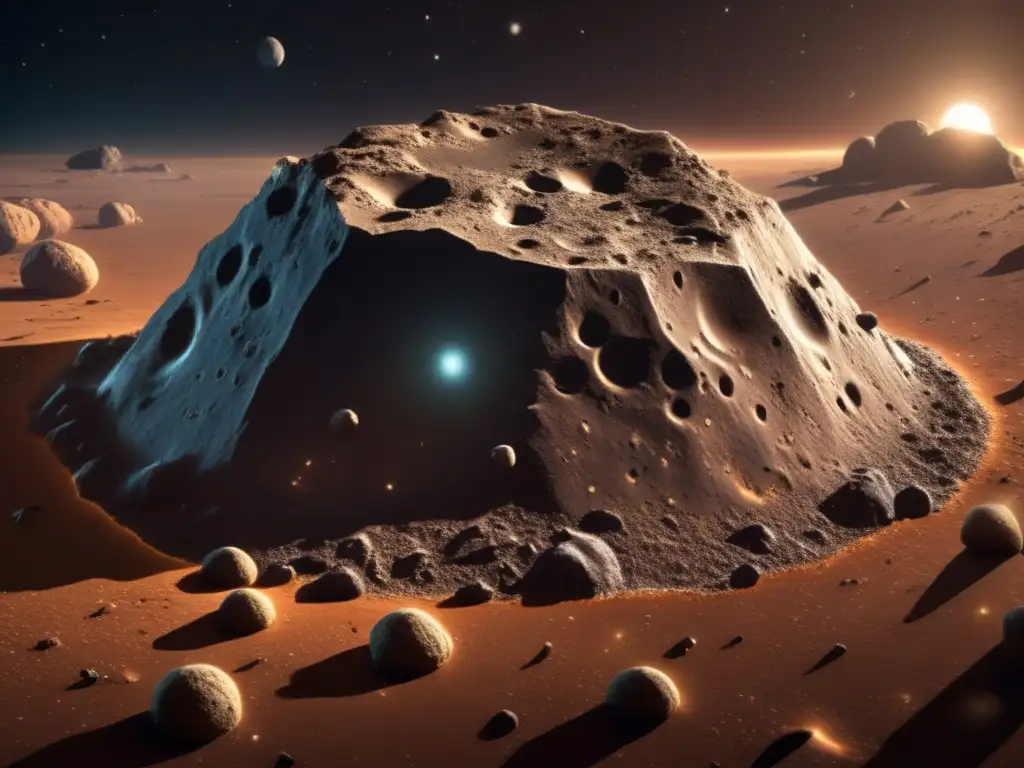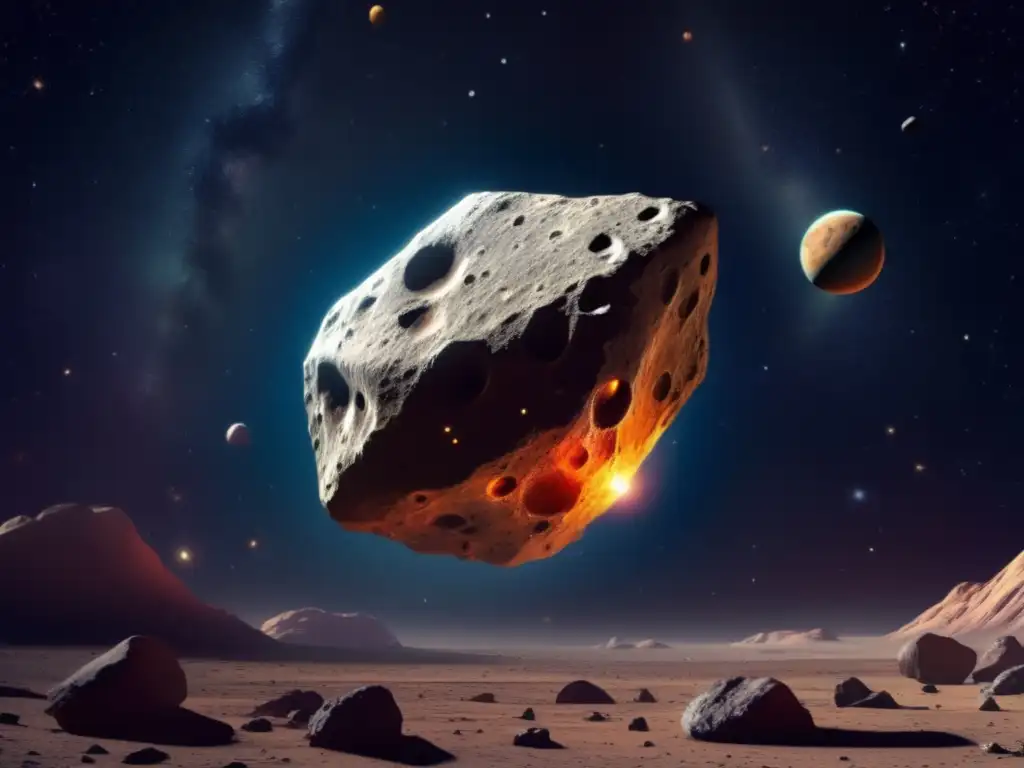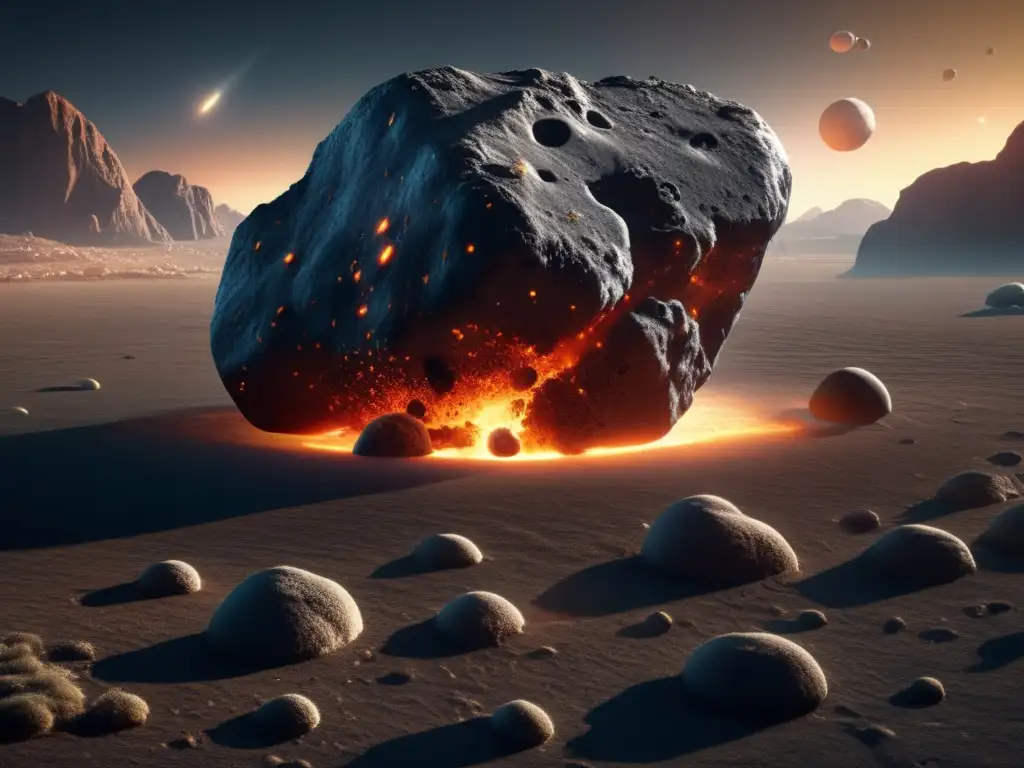Space Rocks With A Spark Of Life: Asteroids And Microorganisms

Introduction
Asteroids have been the subject of intense scientific study for decades. These small celestial bodies are believed to hold clues to the history of our solar system, helping us to understand how it came into existence and evolved over time. However, recent research has shown that asteroids could also be carrying something far more exciting than just rocks - microorganisms. In this article, we will explore the possibility of asteroids hosting life, the implications of such a discovery, and what scientists are doing to investigate further.
Asteroids as Hosts for Microorganisms

Ancient Origins and Transport
The idea of life existing on asteroids is not a new one. In fact, back in 1877, scientists speculated that microbes could survive in space and travel between planets. This was based on the theory of panspermia, which suggests that life can originate in one place and then travel to another. Asteroids are believed to have played a significant role in transporting life throughout the solar system. They are thought to have collided with Earth billions of years ago, bringing with them the building blocks of life, including water and organic compounds such as amino acids.
Surviving the Journey
While the journey through space can be harsh and inhospitable, some microorganisms are known to be incredibly resilient. A study conducted by NASA and the German Aerospace Center found that the bacteria Bacillus pumilus, commonly found in soil, could survive up to six years in space-like conditions. This suggests that microbes could potentially hitch a ride on asteroids and survive the journey through space to other planets, including Earth.
Implications for Extraterrestrial Life
The discovery of life on asteroids would be a groundbreaking one, with significant implications for the search for extraterrestrial life. If we were to find microorganisms on an asteroid, it would suggest that life may not be as rare in the universe as we once thought. It would also open up the possibility of life existing in other parts of our solar system, such as on Mars or one of Jupiter's icy moons.
Investigating Asteroids for Signs of Life

Sample Return Missions
To investigate whether asteroids could be hosting life, scientists are turning to sample return missions. These missions involve sending spacecraft to asteroids, collecting samples, and returning them to Earth for analysis. NASA's OSIRIS-REx mission is currently en route to asteroid Bennu, where it will collect a sample and return it to Earth in 2023. Scientists will be looking for signs of organic compounds, such as amino acids, which could indicate the presence of life.
In Situ Analysis
Another approach to investigating asteroids for signs of life is in situ analysis. This involves sending spacecraft equipped with scientific instruments to study asteroids in situ. The Japanese space agency JAXA's Hayabusa2 mission is an example of this approach. The spacecraft has landed on the asteroid Ryugu and collected samples for analysis using its suite of scientific instruments. The data could shed light on the composition of the asteroid and any potential signs of life.
Risks of Contamination
One of the challenges of investigating asteroids for signs of life is the risk of contamination. The instruments used to collect and analyze samples must be incredibly clean to avoid introducing terrestrial microbes to the asteroid. To mitigate this risk, scientists use strict cleaning protocols and sterilization techniques to ensure that the instruments are as clean as possible before they are sent into space.
Frequently Asked Questions

-
Could life exist on asteroids?
While there is no definitive answer, recent research has shown that it is possible for microorganisms to survive on asteroids and potentially hitch a ride through space to other planets.
-
What would the discovery of life on asteroids mean for the search for extraterrestrial life?
The discovery of life on asteroids would be a groundbreaking one, with significant implications for the search for extraterrestrial life. It would suggest that life may not be as rare in the universe as we once thought and could open up the possibility of life existing in other parts of our solar system.
-
How are scientists investigating asteroids for signs of life?
Scientists are using sample return missions and in situ analysis to investigate asteroids for signs of life. These approaches involve sending spacecraft to asteroids, collecting samples, and analyzing them for signs of organic compounds that could indicate the presence of life.
-
What are the risks of contamination when investigating asteroids for signs of life?
The instruments used to collect and analyze samples must be incredibly clean to avoid introducing terrestrial microbes to the asteroid. To mitigate this risk, scientists use strict cleaning protocols and sterilization techniques to ensure that the instruments are as clean as possible before they are sent into space.
-
What are some potential implications of discovering life on asteroids?
The discovery of life on asteroids could have significant implications, including opening up new avenues for exploration and the search for extraterrestrial life. It could also have implications for our understanding of the origins and evolution of life in the universe.
Conclusion
The search for extraterrestrial life has long captured the imagination of scientists and the public alike. The discovery of microorganisms on asteroids could be a groundbreaking one, with significant implications for our understanding of the universe and our place in it. While research is still ongoing, sample return missions and in situ analysis are providing valuable data that could bring us closer to answering some of the big questions about life in the universe. So, keep an eye on the latest findings as we delve deeper into the world of asteroids and the possibility of life beyond Earth.
Additional Resources

For more information on asteroids and extraterrestrial life, check out the following resources:
- NASA Asteroid Exploration Program
- Space.com - The Search for Life on Asteroids
- Scientific American - Could Asteroids Transport Life Between Planets?
 Asteroids: The Unsuspected Life-Bearers Of The Universe
Asteroids: The Unsuspected Life-Bearers Of The Universe Cosmic Connections: Asteroids And The Origins Of Life
Cosmic Connections: Asteroids And The Origins Of Life Asteroids: The Unexpected Gardeners Of The Cosmos
Asteroids: The Unexpected Gardeners Of The CosmosIf you want to discover more articles similar to Space Rocks With A Spark Of Life: Asteroids And Microorganisms, you can visit the Asteroids and Extraterrestrial Life category.
Leave a Reply

Articulos relacionados: